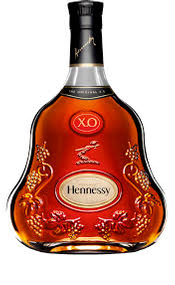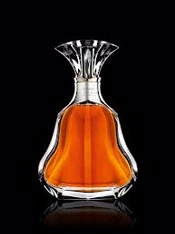We’ve been drinking Cognac all wrong.
I just spent three days in the Cognac region, immersed in the stuff, and not once did I get a snifter of it to drink straight. Not once did we have a glass of Cognac after a meal.
The locals like Cognac as an aperitif. And they don’t drink it straight: they like it with sparkling water on ice. Or, best of all, they like it in a cocktail created for Cognac, the Summit, which contains:
4 slices fresh ginger
1 slice lime
4 cl VSOP Cognac
6 cl French lemonade (the fizzy kind)
1 cucumber peel
That said, maybe it’s not relevant how people in Cognac drink the local spirit, because from the beginning it has been meant for export. Only 3% of all Cognac is consumed in France. It’s one of the most international spirits — a staple of airport duty-free — and yet it also seems to have a very limited audience.
In the US, Cognac is consumed mostly by African-Americans. Hip hop artists like Busta Rhymes, who had a hit with "Pass the Courvoisier," have been great spokesmen. J ay-Z is producing his own Cognac, D’usse.
Cognaci is popular in Asia, particularly China. People who drink Cognac like it a lot.
But for a lot of wide-ranging American drinkers, who might have wine or beer or Scotch or cider depending on their mood, Cognac is out of the rotation.
It’s interesting that so many wine drinkers shun one of the most famous wine-based drinks in the world. But the fact is that while Cognac is made from wine, and sold at aficionado prices, it’s different from the wine that aficionados like in a crucial way.
Very few Cognacs are vintage products. The powerful BNIC (Bureau National Interprofessional du Cognac) places strict production limitations on vintage Cognacs, including a requirement that each barrel be sealed with wax. Any time the producer wants to get into it for any reason, a BNIC representative must be there, and the producer has to pay for that.
The BNIC is protecting a decision that the region made to specialize in blended products, in contrast to nearby Armagnac, where brandy is often made not only by vintage, but from areas as small as an individual vintner’s property. Single-vineyard Cognac exists, but the most sought-after Cognacs are multi-vineyard, multi-vintage blends.
"For me, there’s nothing like a Cognac because it’s all together," says Olivier Blanc, owner and distiller of Léopold Gourmel. "The beauty is the coherence. The beauty of Armagnac is the incoherence."
When Cognac succeeds, it is delicious, but you might end up spending a fortune for it.
I went to a blind tasting with Hennessy, the largest producer of Cognac, and I liked the XO, a classification that Hennessy created for the region in 1870, which requires all eaux de vie in the blend to be at least 6 years old. That regulation is slated to change to 10 years in the near future  because a boom in XO sales in China has meant that producers whose XO Cognacs once were mostly made of eaux de vies 20 years and up have begun using younger and younger base spirits.
because a boom in XO sales in China has meant that producers whose XO Cognacs once were mostly made of eaux de vies 20 years and up have begun using younger and younger base spirits.
I liked the Hennessy XO, which we later had mixed with ginger ale, a delicious and smooth cocktail. I tasted caramel, baked apple, hot cross buns and baking spices, and enjoyed the long finish. Hennessy director of distilleries Olivier Paultes said, "I think it’s easy Cognac. It’s very round, it’s very easy to taste." Agreed. Especially because we drank so much of it mixed into long drinks later — it was also served with apple juice on the rocks — I had no idea how much it cost. Only in writing this article did I learn I was tossing back $200 Cognac in my ginger ale. Now I feel like a hip hop artist. What’s money for but to burn?
I thought Hennessy Paradis was delicious: Light, not alcoholic, golden raisins and floral notes. It’s $900. Paultes then said we should try another Cognac, Paradis Imperiale. This was the best Cognac I tasted in France: Lovely and fruity, with apricot and raisin notes. I left the room thinking,  that’s a nice Cognac, I should get some of that. I had no idea it costs $2500.
that’s a nice Cognac, I should get some of that. I had no idea it costs $2500.
All of that said, you can get value in Cognac that you can’t find in wine. I had a bottle of 1996 Harlan Estate recently, a gift from the winery, that sells for about $500 if you can find it. We had to drink that bottle in one night. Say what you want about the price of Hennessy Paradis, but you can stretch your enjoyment through multiple evenings. And it’s worth knowing that even Paultes drinks his XO with sparkling water and ice.
Knowing it’s OK to mix Cognac opened my heart to it again. The last few times I had Cognac was the lowest level, VS, on airplanes, basically for a buzz to enjoy an action movie with. I thought you weren’t supposed to have it on ice so I didn’t.
I don’t quite agree with Mr. Rhymes on his choice of brand; I’d rather have something from an artisanal small producer like Château de Montifaud. But I will say "Pass the ice." And Château de Montifaud — did you notice how nicely that rhymes?
